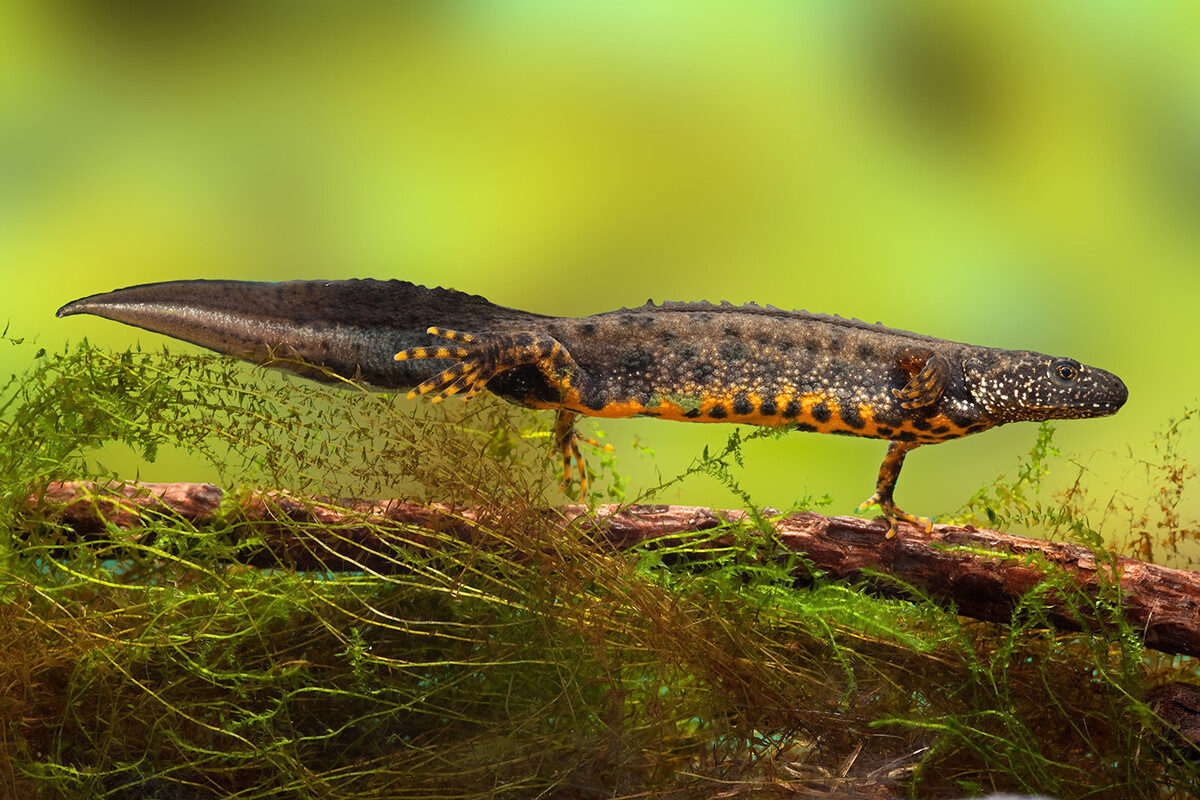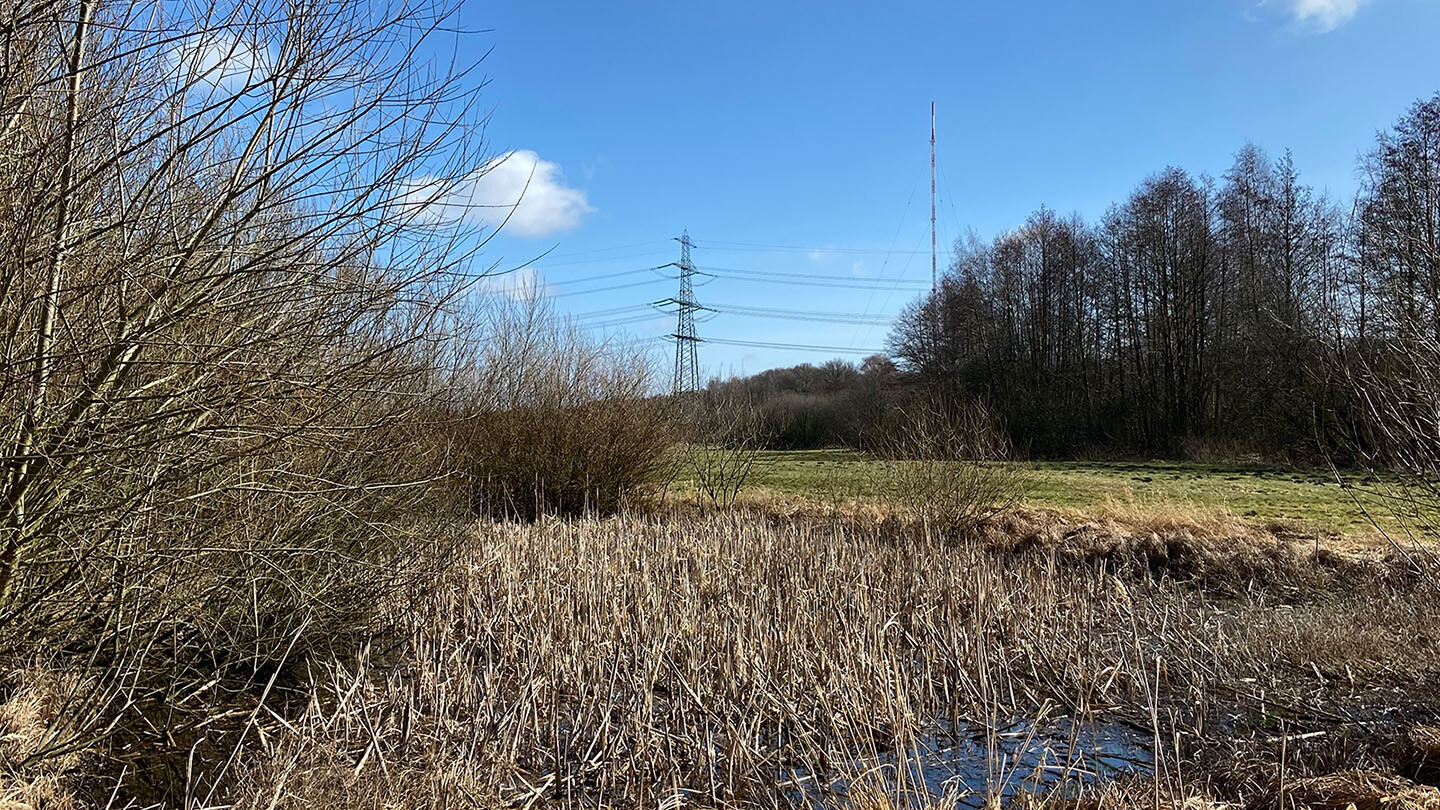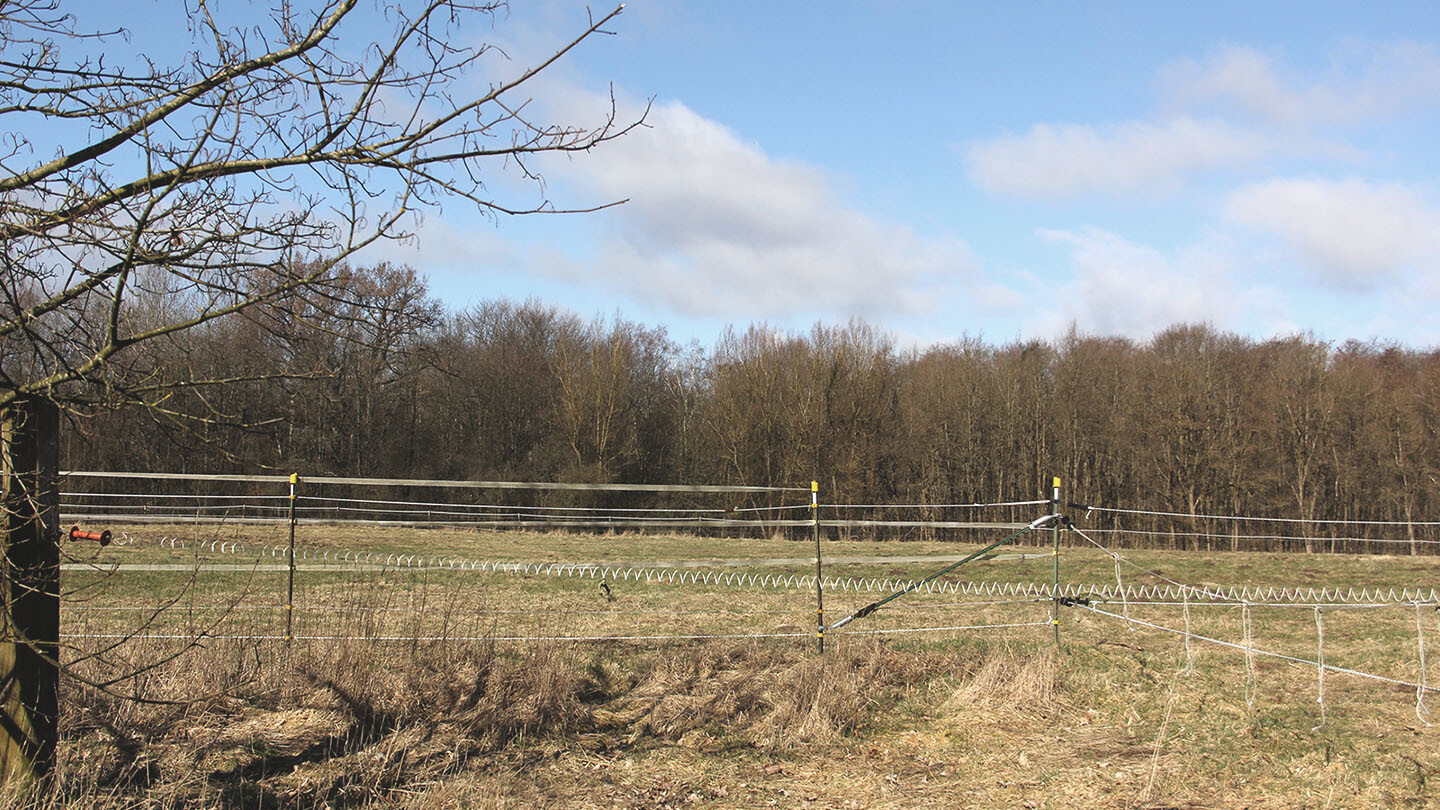How we're protecting the great crested newt
Up to 18 centimetres in length, the crested newt is Germany's largest native newt and is widespread in central Europe. This amphibian prefers wet habitats and species-rich grassland in treeless locations. The newt lives close to water after its spawning season in summer. This water can be located either in hedgerows, in areas of grassland, at the edge of woods or in open woodland. The great crested newt has made its home at different locations in the S4's second planning section.
The back of the great crested newt is grey-black in colour with dark markings and dots, and its underparts are yellow or orange with black spots. It lays its eggs in many different locations – small lakes, ponds, excavation pits and temporary moorland pools. These all have underwater vegetation and are usually free of fish.

The great crested newt: an endangered species
Many of the pools, ponds and streams where the great crested newt feels at home are degraded. Some have been filled in, while others are polluted by rubbish, fertilisers and environmental toxins. The newt is particularly at risk as it prefers clean and still water. It is therefore on Germany's list of protected species in line with the country's nature conservation act (Bundesnaturschutzgesetz) and the EU's FFH directive for safeguarding flora and fauna habitats. The FFH directive's goal is to protect wild plant and animal species, their habitats and the network of connections that exist between these habitats across Europe. One feature of the directive is a list of flora and fauna that require special conservation areas, and it also names species that are endangered and therefore require protection. The great crested newt is on both lists. An overview is available at www.fauna-flora-habitatrichtlinie.de.
The impact of the S4 project
Amphibians such as the great crested newt live at some locations within the S4's second planning section. The animals could potentially suffer high injury and mortality rates as they cross building sites and access roads. Excavated pits and piles of construction materials threaten to turn into traps for them. Vegetation management activities in winter have a negative impact on the newt as undergrowth serves as one of its winter habitats. Our construction process takes these potential hazards into account and we will undertake a number of measures to protect the animals.
Conservation and compensatory measures
The Stellmoor tunnel valley, Höltigbaum nature reserve and protected woodland at Wohldorf are all Natura 2000 sites. We have chosen them as locations to create new aquatic and terrestrial habitats for amphibians. In addition, we will improve conditions for the animals at a number of existing sites and bodies of water. While newts are the focus of our activities, other amphibians will benefit from them as well. Improving biotope conditions makes up for the loss of important habitats elsewhere, and it also contributes the larger goal of replacing legally protected biotope types.
New aquatic and terrestrial habitats for amphibians
To comply with the objectives of the EU's Natura 2000 programme for protected areas, we will follow Commission guidelines and create aquatic and terrestrial habitats in the Stellmoor tunnel valley and at the protected woodland in Wohldorf before construction work begins.
More information
It will take several years before conditions in the ponds are right, as these depend on how plant growth, water levels and the surroundings develop. By the time construction work starts, the ponds need to have reached the conditions that enable them to serve as a habitat for the newts. In other words, we have to create a replacement site for them before we start building at a given location.
The pools need to be suitable for the great crested newt, so we will ensure they have the following features:
- Large zones of vegetation-rich shallow water (less than 30 cm deep) that receive a lot of sunlight
- Rich underwater vegetation so the newt can attach its eggs to the stems and leaves of plants
- No fish and no commercial fishing-related usage
- Piles of dead wood in the water and on nearby land to serve as hiding places
- No grazing on surrounding land if possible, as animals' hooves and eutrophication (harmful plant growth) cause damage. We will fence the pools off if these surrounding areas are used as pasture.
- Regular trimming of vegetation at the water's edge to prevent deep shade from developing.

Meiendorf is located in Hamburg's northeast and will be the site of a specially created newt habitat, including a pond.
Conservation measures at Stellmoor tunnel valley/Höltigbaum nature reserve
We are creating spawning grounds and a terrestrial home for the great crested newt in the Stellmoor tunnel valley. This will strengthen local populations. Our plans consist of dredging two existing pools. At the moment, they are no longer attractive as a spawning site for the newts, but that will change when we remove sludge from them. We will also cut back the undergrowth around the edges of the pools. The final plans for this new habitat will be closely coordinated with the relevant environmental authority and local nature conservation associations.
We will also create a new body of standing water. It will be located close to a number of similar pools that together form an aquatic complex that is home to different amphibians, including the great crested newt and moor frog. The new pool will help improve the connections between the existing habitats and so support the newt population living to the northwest of the tracks.
Our work will incorporate the above-mentioned features for creating spawning sites for the great crested newt:
- A protective strip of meadow plants and moist megaphorb growth around the body of water will serve as a new terrestrial habitat for newts right at the water's edge
- The protective strip ensures that less harmful agricultural runoff enters the water.
- Bushes and saplings will be regularly cut back in the protective strip. This will prevent eutrophication caused by falling leaves.

We will create a pond for the great crested newt in the Wohldorfer Wald nature reserve in Hamburg.
Conservation measures at Wohldorfer Wald nature reserve
We will create two new pools in a grassy area of the protected wood at Wohldorf. This work will incorporate the above-mentioned features to creating spawning sites for the great crested newt: around the pools, we will cut bushes and saplings back regularly to prevent eutrophication caused by falling leaves.
That aside, we will mow this grassy area only very occasionally – every two or three years, for example, as this will enable it to turn into a waterside meadow. Biotopes and communities of plants will be able to establish themselves in wet areas and hollows. We will create piles of dead wood to serve as other retreats for hibernating newts, while the bushes and hedges planned for the site will also offer them a winter home. This way, we will replace the habitat lost during the S4's construction.